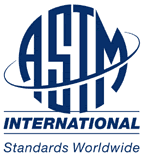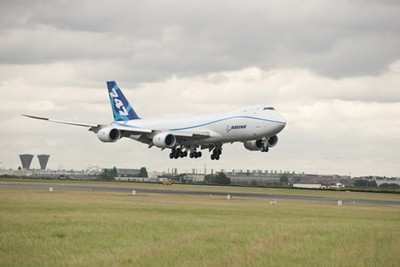Revised Standards Approved July 1
 Renewable fuels can now be blended with conventional commercial
and military jet (or gas turbine) fuel through requirements in the
newly issued edition of ASTM D7566-11, Specification for Aviation
Turbine Fuel Containing Synthesized Hydrocarbons. The revised
standard was approved July 1, 2011.
Renewable fuels can now be blended with conventional commercial
and military jet (or gas turbine) fuel through requirements in the
newly issued edition of ASTM D7566-11, Specification for Aviation
Turbine Fuel Containing Synthesized Hydrocarbons. The revised
standard was approved July 1, 2011.
Through the new provisions included in ASTM D7566, up to 50
percent bioderived synthetic blending components can be added to
conventional jet fuel. These renewable fuel components, called
hydroprocessed esters and fatty acids (HEFA), are identical to
hydrocarbons found in jet fuel, but come from vegetable
oil-containing feedstocks such as algae, camelina or jatropha, or
from animal fats called tallow. The standard already has criteria
for fuel produced from coal, natural gas or biomass using
Fischer-Tropsch synthesis.
Subcommittee D02.J0 on Aviation Fuels in ASTM International
Committee D02 on Petroleum Products and Lubricants, which consists
of more than 2,000 members representing 66 countries, revised the
D7566 standard. Mark Rumizen, who helped lead the work to revise
the specification, heads the certification-qualification group for
the Commercial Aviation Alternative Fuels Initiative (CAAFI), a
coalition that seeks to enhance sustainability for aviation by
promoting the use of alternative jet fuels.

F/A-18 Hornet Biofuel Test
"The revision of D7566 reflects an industry cooperative effort
to accomplish this task," says Rumizen. "Because of the great
emphasis on safety when you're dealing with aviation fuel, the
passage of this ballot required a collaborative and cooperative
effort between the members of the aviation fuels community."
Representatives from companies across the fuel supply chain plus
HEFA fuel producers, aircraft and engine manufacturers, and
regulatory agencies were involved in the specification development
and revision.
Rob Midgley, technology manager, aviation fuels, for Shell
Aviation, Cheshire, Great Britain, and a D02 member, notes, "The
approval of HEFA as a blending component in jet fuel builds on the
great efforts expended by ASTM on approving Fischer-Tropsch
components in 2009 and shows that, as a consensus group, ASTM can
make great strides whilst maintaining the safety levels demanded by
the aviation sector."
Aviation fuel producers, distributors, airport fuel farms and
airlines in the global aviation community will use the standard to
verify fuel quality and performance by testing to the D7566
specification requirements. With this new edition, D7566 includes
new, specific requirements for the bioderived synthetic fuel
component such as thermal stability, distillation control and trace
material amounts.

B747 Flown On Biofuel Blend
After blending with conventional jet fuel, new lubricity,
distillation and composition requirements in D7566 must also be
met. As a result, the blended jet fuel used in the airplane is
essentially identical to conventional jet fuel and does not differ
in performance or operability, notes Rumizen.
"The Air Transport Association of America and America's airlines
commend ASTM for this critical and significant step, which brings
the airline industry one step closer to meeting our environmental
goals of widespread production of cleaner, alternative fuels while
enhancing energy supply security and competitiveness," said John
Heimlich, ATA vice president and chief economist, Washington,
D.C.
 Unfortunate... ANN/SportPlane Resource Guide Adds To Cautionary Advisories
Unfortunate... ANN/SportPlane Resource Guide Adds To Cautionary Advisories ANN FAQ: Turn On Post Notifications
ANN FAQ: Turn On Post Notifications ANN's Daily Aero-Term (04.29.24): Visual Approach Slope Indicator (VASI)
ANN's Daily Aero-Term (04.29.24): Visual Approach Slope Indicator (VASI) ANN's Daily Aero-Term (04.28.24): Airport Marking Aids
ANN's Daily Aero-Term (04.28.24): Airport Marking Aids ANN's Daily Aero-Linx (04.28.24)
ANN's Daily Aero-Linx (04.28.24)





